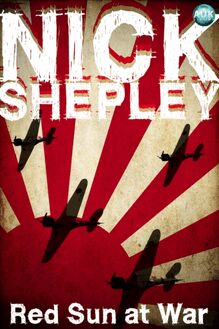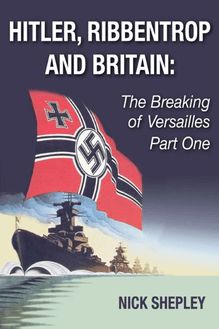Paris Peace Conference 1919 , livre ebook
34
pages
English
Ebooks
2015
Vous pourrez modifier la taille du texte de cet ouvrage
Obtenez un accès à la bibliothèque pour le consulter en ligne En savoir plus
Découvre YouScribe en t'inscrivant gratuitement
Découvre YouScribe en t'inscrivant gratuitement
34
pages
English
Ebooks
2015
Vous pourrez modifier la taille du texte de cet ouvrage
Obtenez un accès à la bibliothèque pour le consulter en ligne En savoir plus
Publié par
Date de parution
14 décembre 2015
Nombre de lectures
0
EAN13
9781785383489
Langue
English
Publié par
Date de parution
14 décembre 2015
Nombre de lectures
0
EAN13
9781785383489
Langue
English
Title Page
The Paris Peace Conference, 1919
A Student’s Guide
Nick Shepley
Publisher Information
Published in 2015 by
Andrews UK Limited
www.andrewsuk.com
The right of Nick Shepley to be identified as the author of this work has been asserted in accordance with the Copyright, Designs and Patents Act 1998
Copyright © 2015 Nick Shepley
All rights reserved. No part of this publication may be reproduced, stored in a retrieval system, or transmitted, in any form or by any means without the prior written permission of the publisher, nor be otherwise circulated in any form of binding or cover other than that in which it is published and without a similar condition being imposed on the subsequent purchaser. Any person who does so may be liable to criminal prosecution and civil claims for damages.
The opinions expressed herein are those of the author and do not necessarily reflect the opinions and values of Andrews UK.
Introduction
In December 1918 Paris became the focus, for six months, of the aspirations of millions of people from Europe, the Middle East, Asia and Africa. At the end of the most devastating war in human history at that point, the First World War that had lasted between 1914 and 1918, the leadership of the victorious powers gathered to re-shape the global order. In this ebook you will learn about the politicians who shaped the post war world during the conference and the problems they faced.
You will also learn about the nations that attended the conference and the aspirations many of them had. You will learn about the conference’s decisions and the impact they had on Europe, Africa, Asia and the Middle East. In the final part of this book there will a summary of the different interpretations of the Paris Peace Conference and advice on how to answer essay questions on the topic.
The First World War
In order to keep this ebook concise and focused on the topic of the conference, there isn’t the space here to discuss the war in its entirety, however, there needs to be a brief overview in order to make sense of the negotiations that followed it.
The war was fought not only on the Western Front in France and Belgium, but in the east between Germany and Austria Hungary on one had and Russia on the other. It was fought after 1915 between Italy and Austria Hungary in the Alps and between the British and the Ottoman Empire in the Dardanelles and the Middle East. It engulfed the Balkans, it was fought on the high seas at key battles such as Jutland and saw a prolonged U-boat campaign in the Atlantic that ultimately drew the USA into the conflict. The war devastated large parts of East Africa as the British and German attacked one another from their colonies, using large numbers of African troops.
France relied on large numbers of colonial soldiers from Africa and the British deployed over a million Indian troops on all fronts, be predominantly in Mesopotamia in the Middle East. Over a hundred thousand Chinese workers were used on the Western Front, manning railways and digging trenches, and war came to China as the British and their ally, Japan, dislodged Germany from her Treaty Port at Tsingtao. In four years 17 million people lost their lives as a result of the war and a further 20 million were injured or maimed. In combatant countries entire generations of young men were lost and deep psychological scars lingered long after the fighting had ended.
On the Western Front, a stalemate had emerged in 1914 as Germany’s plans of a swift war of manoeuvre to deal a ‘knock out blow’ to France failed. When the Ottoman Empire joined the war on Germany’s side in October 1914, the British and French believed it was the weak link in the German led alliance the ‘Central Powers’. Throughout 1915 the British and French, along with troops from Australia, New Zealand and other parts of Britain’s empire laid siege to the Ottoman Empire in the Dardanelles Straits. The operation ended in disaster and in early 1916 the allies were forced to withdraw.
The British and French Armies matched the strength of Germany and in 1916 the western allies, along with Italy and Russia attempted a series of ‘concentric attacks’ against Germany and Austria, coordinating all their efforts on all sides of which the only real gains were made by the Russians in the Carpathian Offensive. Germany quickly counter attacked, rolling back Russia’s successes and on the Western Front, at the start of the year, she attacked the French at Verdun, hoping the ‘bleed France white’, to cause such huge losses that the French would no longer be able to carry on the fight.
The British and French counter attacked at the Somme, resulting in biggest single loss of life to the British Army in any one battle. In February 1917, the the war resulted in a revolution in Russia and the downfall of Tsar Nicholas II . The Germans, feeling the economic strain of the conflict and the effect of a naval blockade by the British, launched a policy of unrestricted submarine warfare, meaning that any and all ships sailing to Britain would be sunk, including those of the USA. Attacks on American shipping were a main contributory reason for the intervention of America in the war, joining the British and French as an associate power, not a full ally.
Germany, now well aware of the economic power that America could bring to bear was desperate to win the war as quickly as possible. In October 1917, Russia’s Provisional Government, which replaced the Tsar, was swept away by the Bolshevik Party, a hitherto obscure and extreme revolutionary group, determined to impose a bloody Marxist social revolution on Russia. The Bolsheviks pledged to withdraw Russia from the First World War, claiming it was a struggle between capitalist exploiters, using the workers of the world as expendable cannon fodder. Instead, they hoped that the war would transform into a global war of the working classes against the bourgeoisie. The Bolsheviks signed a peace treaty with Germany in March 1918, at Brest Litovsk in Poland, giving Germany Poland, the Ukraine and the Baltic States.
They signed over vast territories reluctantly, only at the threat of a German invasion of Russia. The exit of Russia from the war enabled the Germans to throw their forces at the Western allies in one last bid for victory and in the spring of 1918, General Ludendorff of the German Army launched five waves of attacks in the west. They came close to overwhelming the French, British and the newly arrived Americans, but the failure to deliver a knock out blow for a second time was too much for the over stretched German Army. The Kaiser’s troops were so short on resources that some were close to starvation as the Ludendorff offensive finally collapsed.
The allied counter attack between August and November 1918 finally drove the German Army from France and Belgium, and by October, it was clear to both Ludendorff and Hindenburg, the two generals effectively governing Germany, that the war was lost. Food shortages and collapsing morale led to unrest in Germany and a naval mutiny at Wilhelmshaven on the North Sea coast quickly developed into a revolution that saw the Kaiser flee for exile in the Netherlands. An armistice was signed between the allied powers and Germany on November 11 1918, bringing the First World War to an end.
Part One: The Powers
Overview
In January 1919 the conference officially opened with 32 nations participating from Europe, Asia, Africa and the Americas. They comprised four rough groups.
Group
Nations
Victorious Powers
Britain, France, the USA, Italy, Japan
Defeated Powers
Germany, Bulgaria, Austria, Turkey
New and Emerging Nations
Poland, Czechoslovakia, the Arab peoples represented by Prince Feisal
Colonies and Dominions
India, Vietnam, Korea, Australia, New Zealand, Canada
The countries that sent representatives to the conference had a wide range of often contrasting aims and ambitions. Some, like France, sought to punish Germany and to gain territory. Others, like China, hoped that the conference would serve a very different purpose and overturn treaties imposed upon them by European nations in the 19 th Century. The Conference was seen by many of the delegates there as a historically unique opportunity to establish a world order favourable to the nations they represented. However, the great powers at the conference were able to draw up the final document, the Treaty of Versailles, in a way that primarily suited themselves. There were 52 commissions (smaller meetings) involving delegates from 27 nations, where a wide range of issues were debated, ranging from the creation of an International Labour Organisation to arms limitations, the question of what to do with prisoners of war and how to divide up the vanquished German, Austrian and Ottoman Empires.
Chapter One: The Victorious Powers
The Paris Peace Conference was initially dominated by five powers, Britain, America, France, Italy and Japan, but by the end of the conference, the last two powers had left the negotiations.
The USA and Woodrow Wilson
Woodrow Wilson, the President of the United States of America, had set sail for Europe in December 1918. When he arrived in France he was treated as a hero, streets were named after him and in Paris his name was lit up in neon lights. The US president who had brought America so decisively into the conflict on France’s side was cheered by the public, but there was another reason fo











